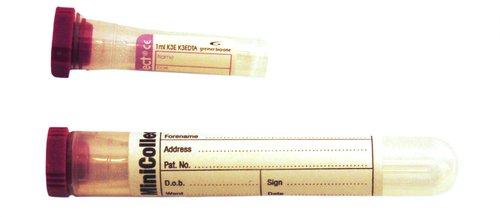Haemoglobin A1c (HbA1c)
Chemical Pathology
Notes
- Effective control of glycaemia delays the onset and slows the progression of diabetic retinopathy, nephropathy and neuropathy.
- Glycaemic control can be assessed by measuring haemoglobin A1c (HbA1c), the major component formed when glucose attaches to haemoglobin in the blood.
- HbA1c circulates for the lifespan of the red blood cell and so reflects the prevailing blood glucose levels over the preceding 2-3 months.
- HbA1c can also be used for the diagnosis of diabetes mellitus, although this is not appropriate in all patients.
- The methodology used locally is boronate affinity chromatography (Menarini 9210, introduced May 2014).
- Rapid erythrocyte turnover, as in haemolytic anaemia's, will produce falsely low (and maybe inappropriately normal) HbA1c levels. In these cases other tests of glycaemic control should be used (blood glucose monitoring or fructosamine).
- HbA1c results can be affected by various other factors including the presence of haemoglobin variants (see Annex 1 of WHO report). The current methodology is able to accurately report HbA1c in the presence of carrier status for the most common variants (HbS, HbC, HbD and HbE traits) but will give falsely low results with HbF levels of >15%.
Sample requirements
For adults, blood taken into an 4mL EDTA Tube

For children, blood taken into a 2mL EDTA tube

For infants, a finger prick sample collected into a 1mL minicollect EDTA tube can be manually processed.

Storage/transport
Send at ambient temperature to the laboratory. If unavoidable, samples can be stored refrigerated overnight.
Required information
Relevant clinical details including whether monitoring known diabetes or whether for diagnosis.
Turnaround times
The assays are run on a daily basis Monday to Friday. The in-lab turnaround time is normally less than 72 hours.
Reference ranges
Target HbA1c values vary according to clinical circumstances and are usually set individually for each patient by their clinician.
Further information
To learn more about HbA1c visit Lab Tests Online or access the monograph of the Association for Clinical Biochemistry and Laboratory Medicine which also includes information on diagnosis of diabetes and factors affecting HbA1c values.
Links
- World Health Organisation report on Use of HbA1c in diagnosis of diabetes 2011 http://www.who.int/diabetes/publications/report-hba1c_2011.pdf
- Conversion chart to previous units
- Use of HbA1c in diagnosis of diabetes
Page last updated 12/02/2015